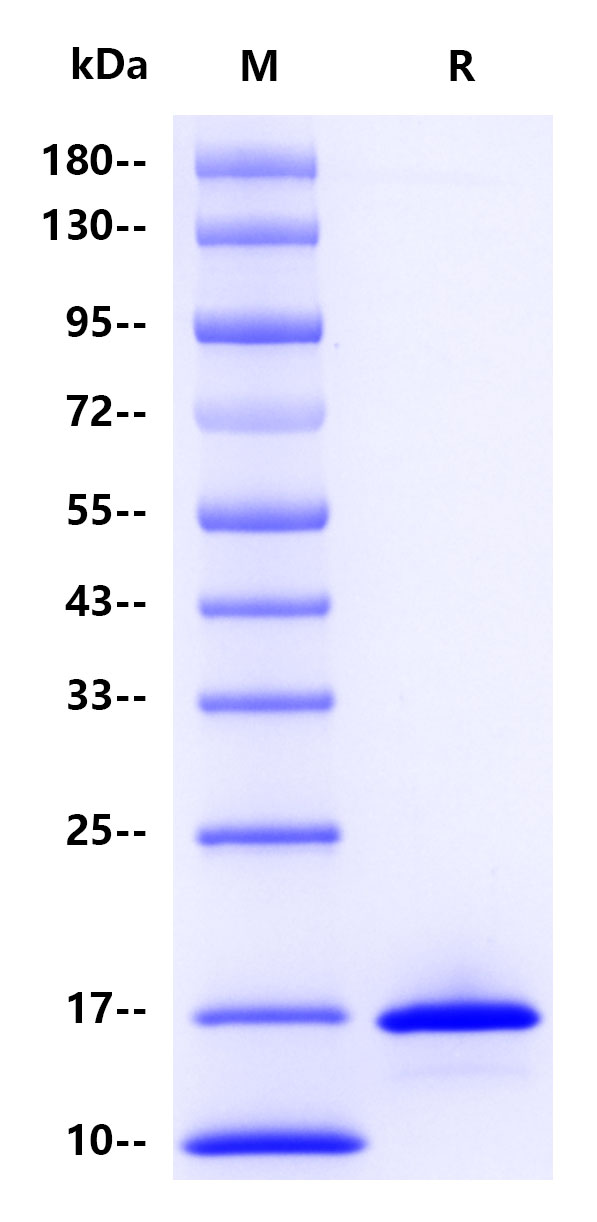Protein sequence(P0CG04, Gly1-Ser106, with C-10*His)
GQPKANPTVTLFPPSSEELQANKATLVCLISDFYPGAVTVAWKADGSPVKAGVETTKPSKQSNNKYAASSYLSLTPEQWKSHRSYSCQVTHEGSTVEKTVAPTECSGGGGSHHHHHHHHHH
>95% by SDS-PAGE
12 months from date of receipt, -20 ℃ to -70 °C as supplied.
1 month, 2 to 8 °C under sterile conditions after reconstitution.
Please avoid repeated freeze-thaw cycles.
The immunoglobulin light chain is the small polypeptide subunit of an antibody (immunoglobulin). There are two types of light chain in humans: kappa (κ) chain and lambda (λ) chain. Individual B-cells in lymphoid tissue possess either kappa or lambda light chains, but never both together. Specific rearrangement of lambda light chain of immunoglobulins can lead to loss of some protein coding genes. Using immunohistochemistry, it is possible to determine the relative abundance of B-cells expressing kappa and lambda light chains. If the lymph node or similar tissue is reactive, or otherwise benign, it should possess a mixture of kappa positive and lambda positive cells. If, however, one type of light chain is significantly more common than the other, the cells are likely all derived from a small clonal population, which may indicate a malignant condition, such as B-cell lymphoma.

2μg (R: reducing conditions)